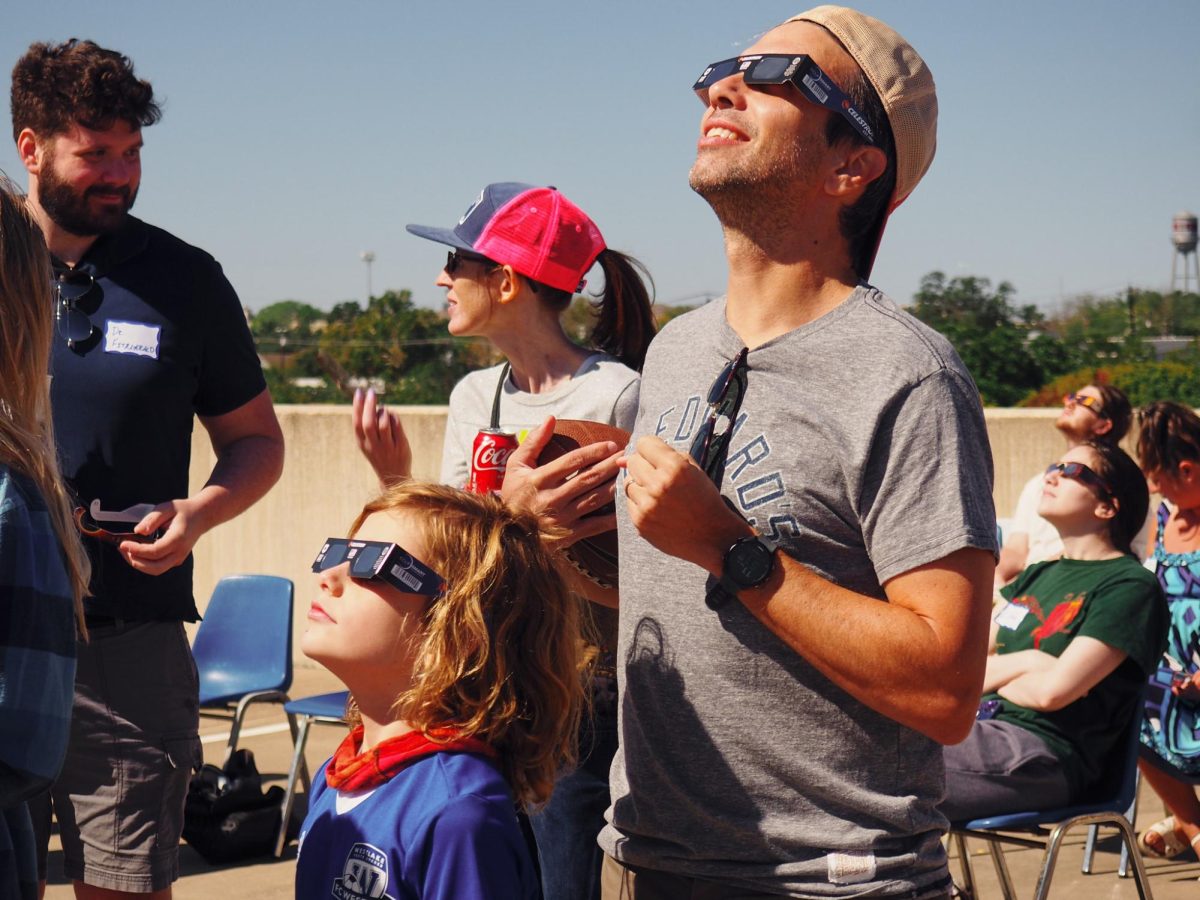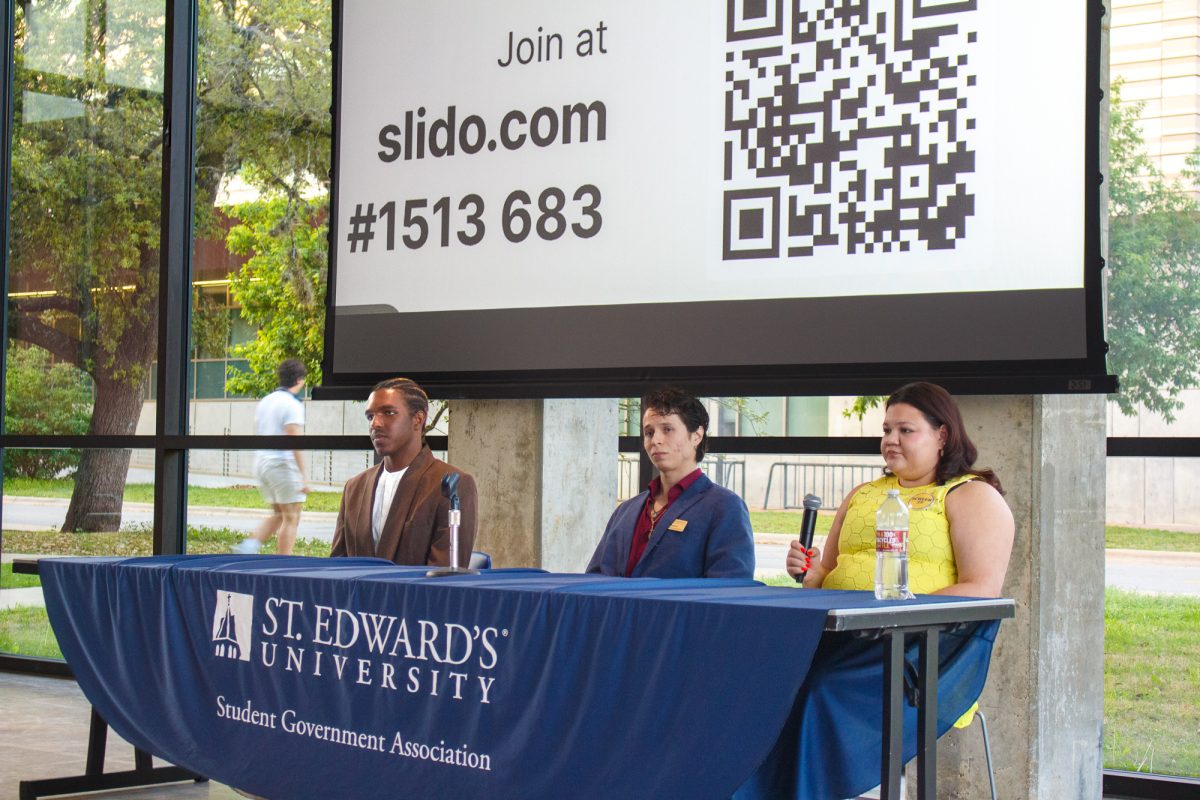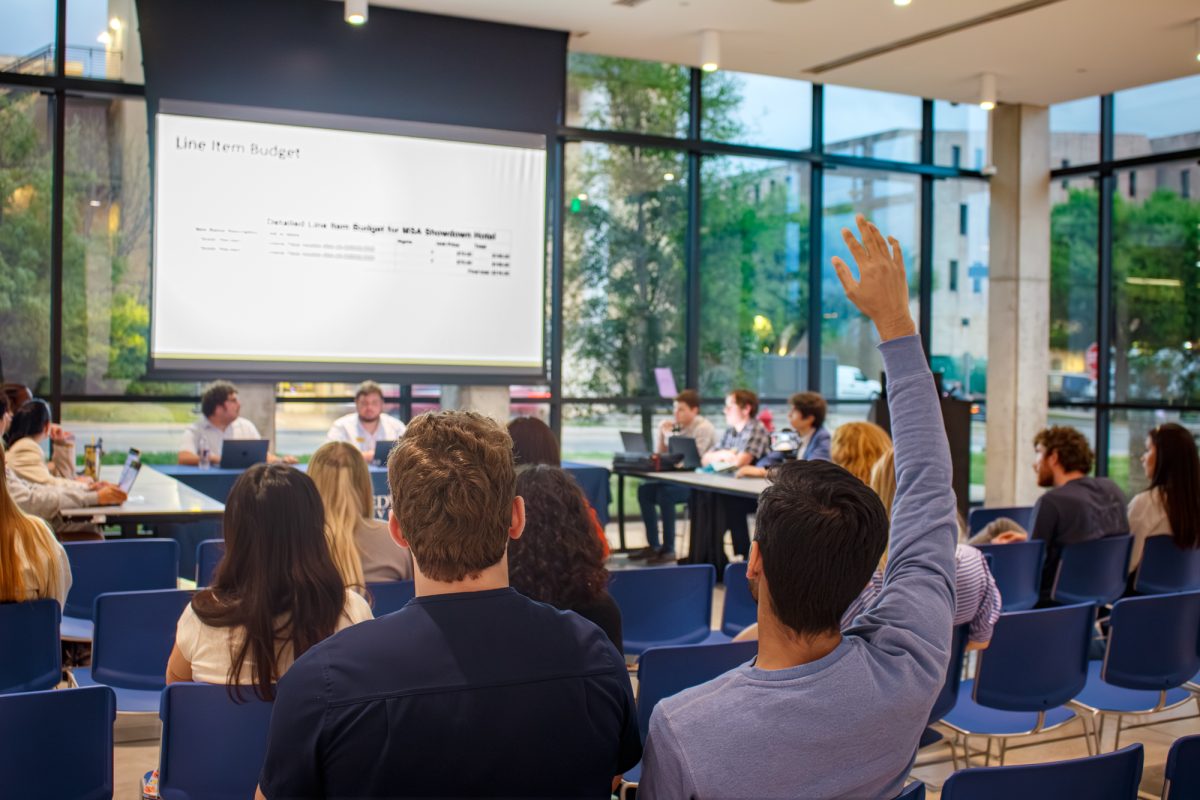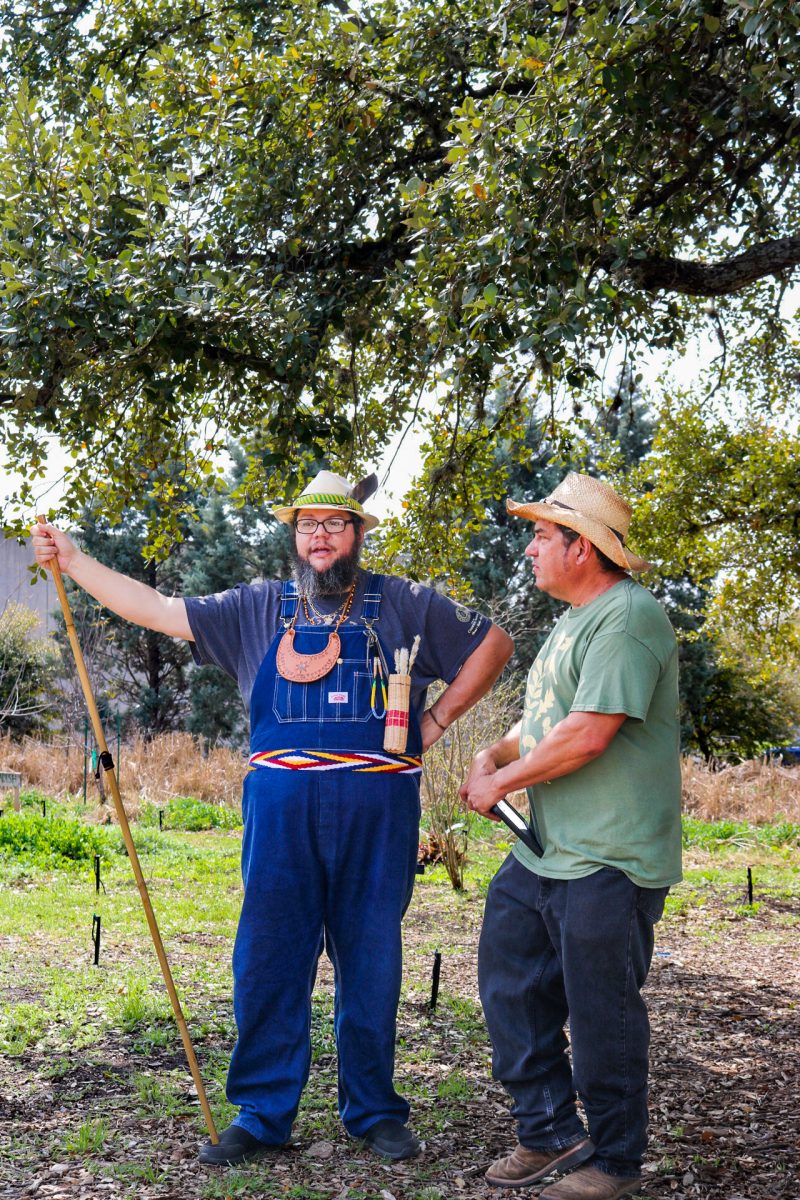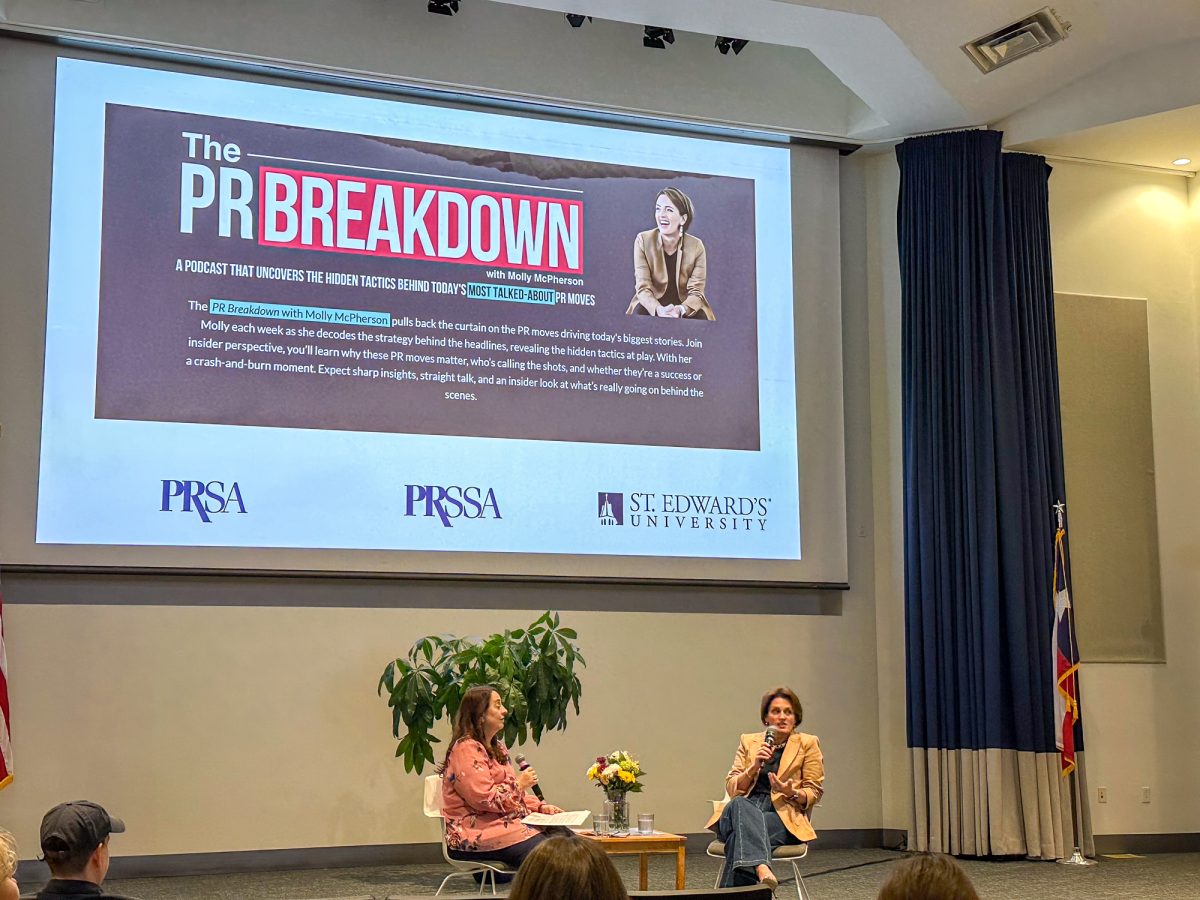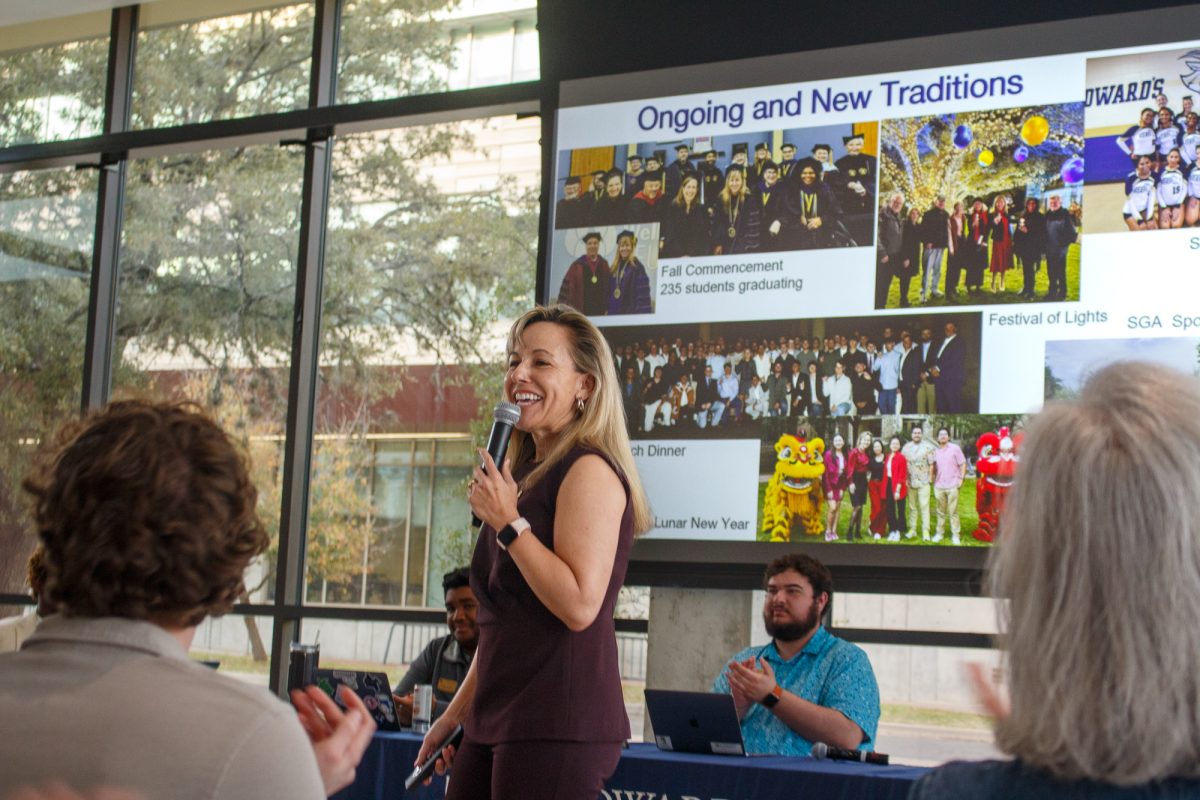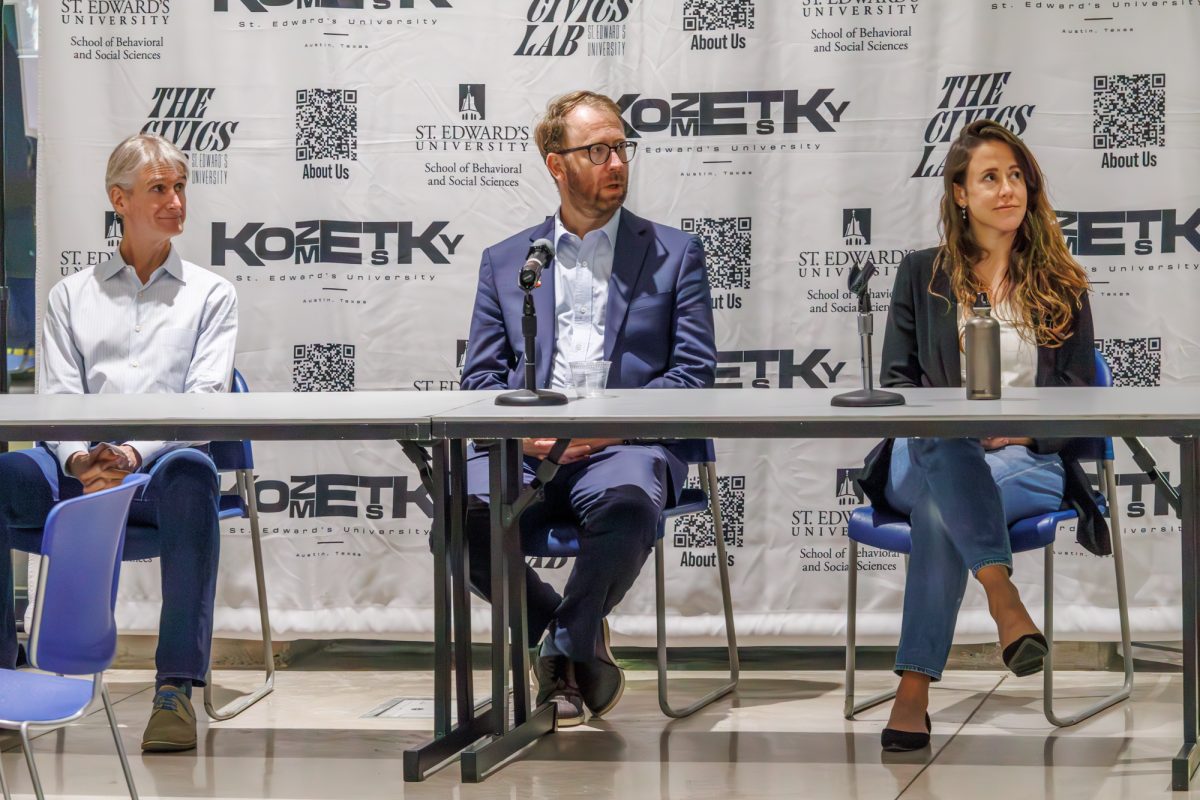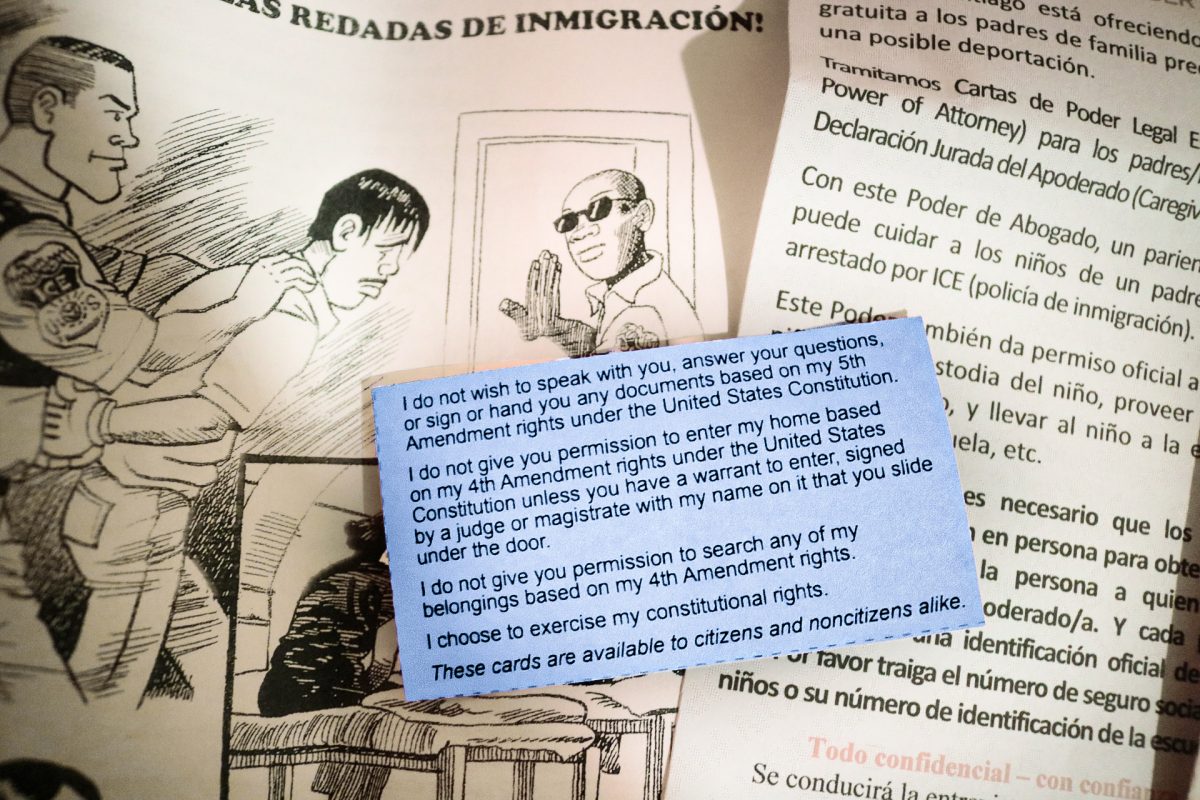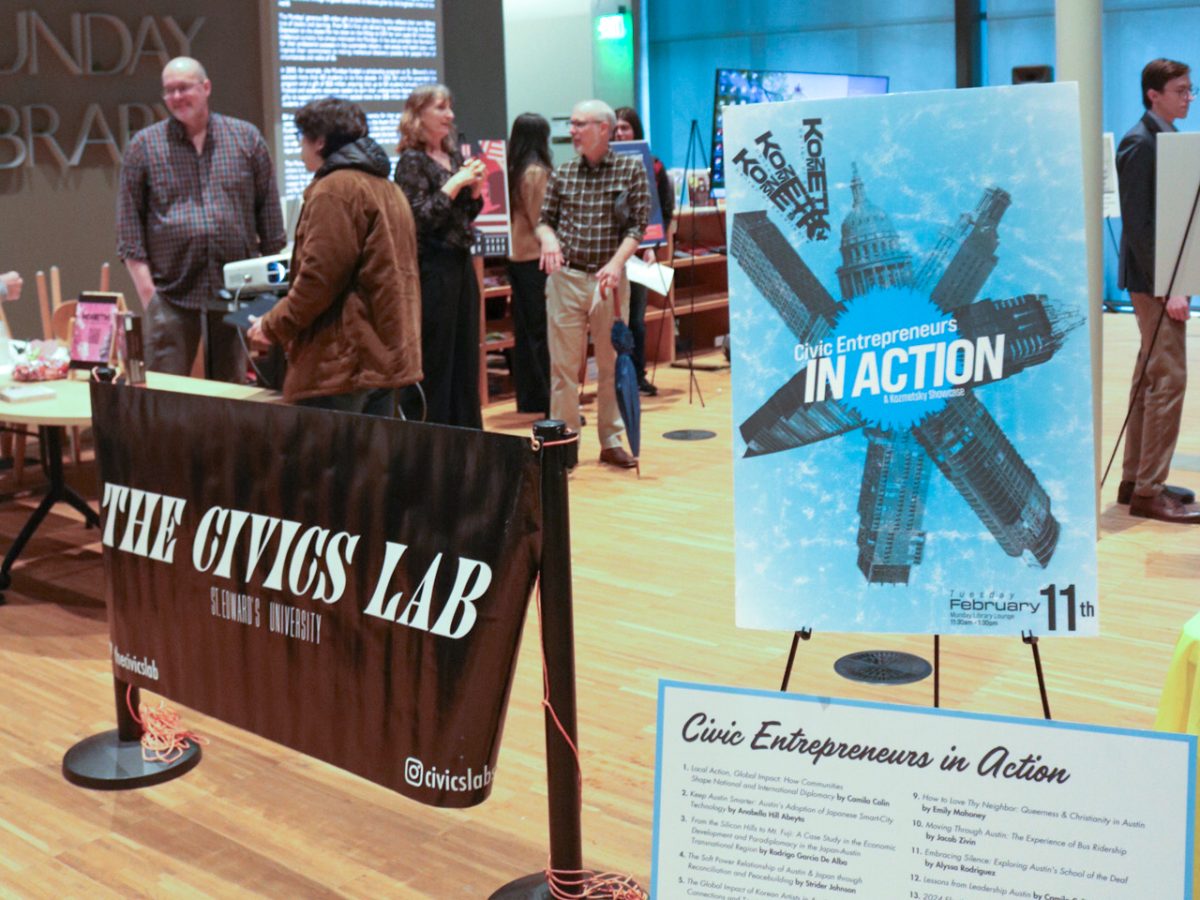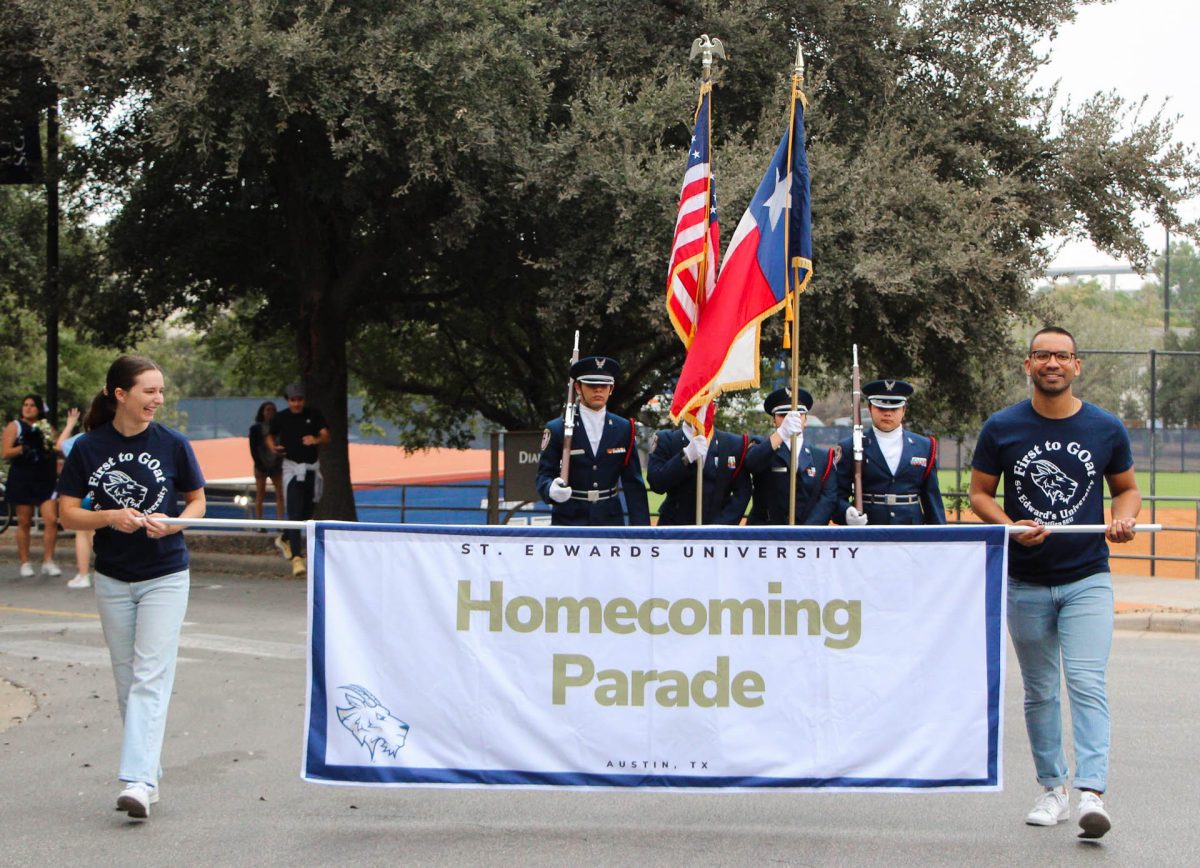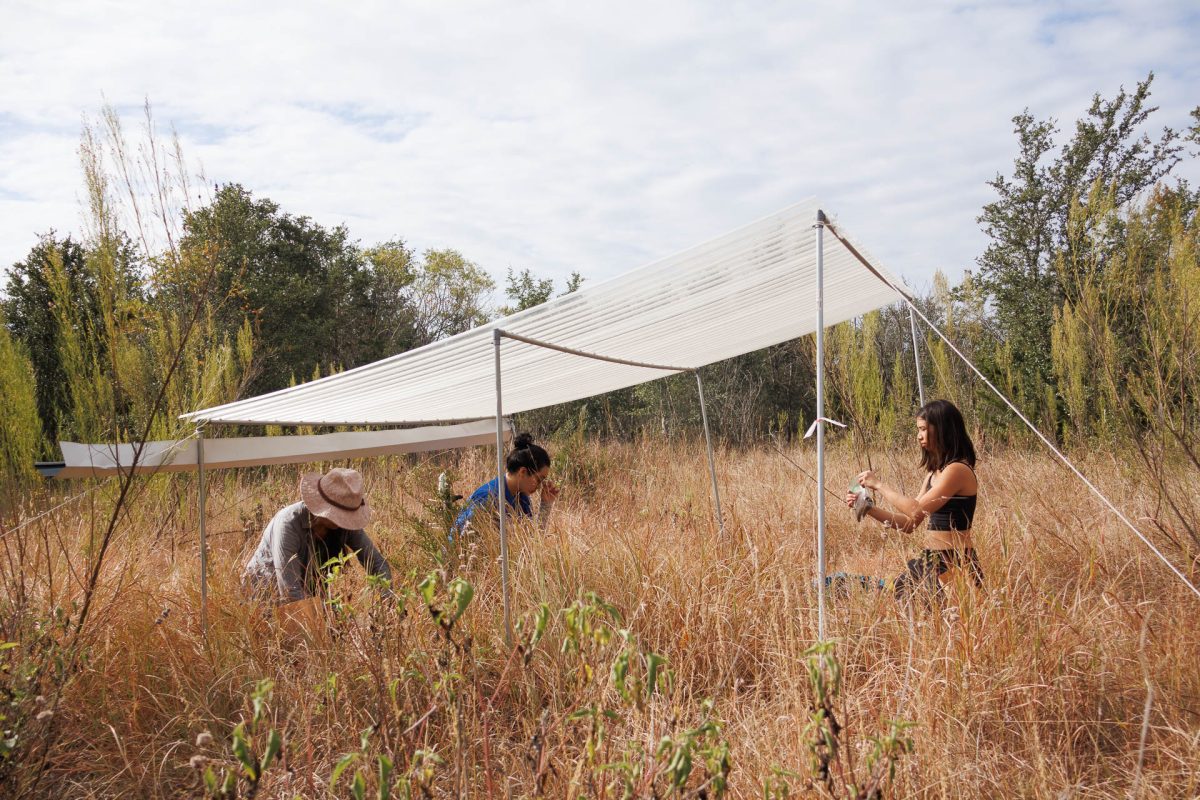This weekend’s “Ring of Fire” solar eclipse had millions of people gathering across the world to bear witness to the scientific marvel. Here in Austin, Texas, the St. Edward’s physics club hosted an eclipse watch party on top of the student parking garage. The club provided protective glasses and two telescopes through which anyone could view the solar occurrence. They also provided pizza and cold drinks for everyone to enjoy while viewing the eclipse.
Annular, or “ring of fire,” eclipses only occur when the moon is at its farthest point from the Earth. Because of this greater distance, the moon can pass fully in front of the sun without entirely blocking it. When viewed from the path of totality, the geographical path which the moon’s shadow passes directly over, the sun appears around the moon as a thin ring of light. These specific conditions make the event quite rare. According to NASA, the next visible annular eclipse in the U.S. won’t happen again until 2039.
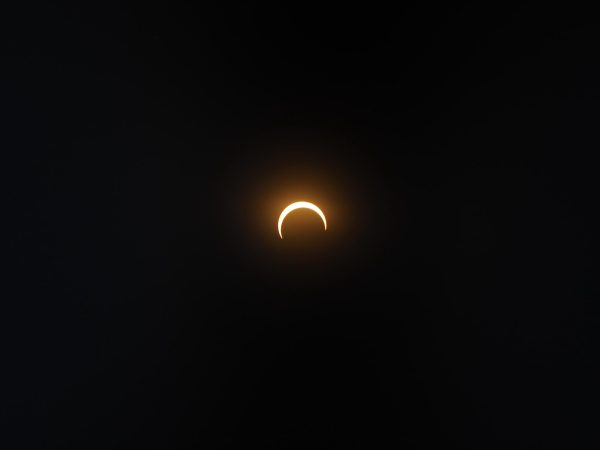
It’s not all bad news for those who missed this weekend’s stellar spectacular – an even more rare eclipse is headed towards Austin this spring. On April 8, 2024, there will be a total solar eclipse. As opposed to an annular eclipse, a total eclipse occurs when the moon is near its closest point to the Earth, causing it to fully obstruct light from the sun. This means that the Earth will become dark for a few minutes while the eclipse is in totality. April’s eclipse is another rare opportunity for Austinites to experience an astral phenomena.
“Historically, the solar eclipse has been very important because scientists use it to do lots of experiments,” physics club president Harsh Vibhuti said. “You can’t usually look at the sun directly, but if the moon is blocking it, and solar filters are used, you can figure out the composition of the sun as well as see stars behind the sun. Some scientists used this to prove Einstein’s relativity theory, since the gravity from the sun bends some of the light coming from stars behind it.”
The physics club planned this event in advance to help people understand the science behind the phenomenon. A group of astronomers and both retired and current professors provided students with the tools to view the eclipse safely. They were also quick to educate anyone with questions.
“Seeing the moon eclipse the sun was one of the first things humans began to observe tens of thousands of years ago,” physics professor Brian Mulligan said. “Humans began to see and learn about the universe and our place in the universe. Through seeing them regularly we learned how the moon orbits the earth and the earth orbits the sun, and we just learned more about our solar system today. We still observe these events, they help us track the moon’s orbit and the earth’s spin more precisely.”
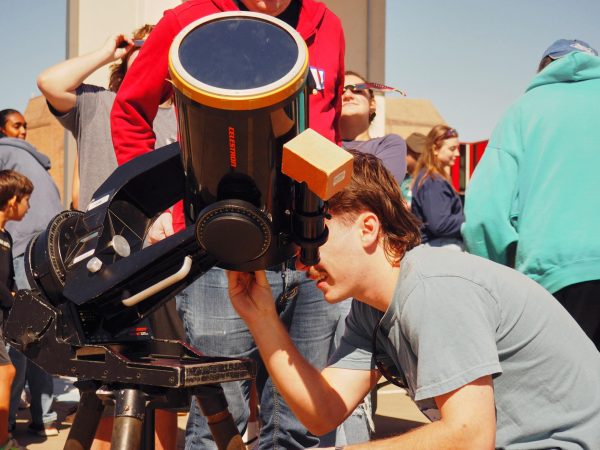
(Breze Reyes / Hilltop Views)
Looking at the sun through a telescope or protective eye wear wasn’t the only way to view the eclipse. The partially-covered sun cast crescent-shaped shadows on the ground. Retired ACC astronomy professor John Fulton explained why this happens only in certain areas and not directly under the sun.
“The shadow of the moon over the sun’s surface is showing a crescent,” Fulton said. “You’re seeing it through a slit – the space between leaves. You see many pictures of the crescent of the moon.”
The physics club will be hosting another eclipse watch party for the total solar eclipse April 8, no prior physics knowledge or interest necessary.


